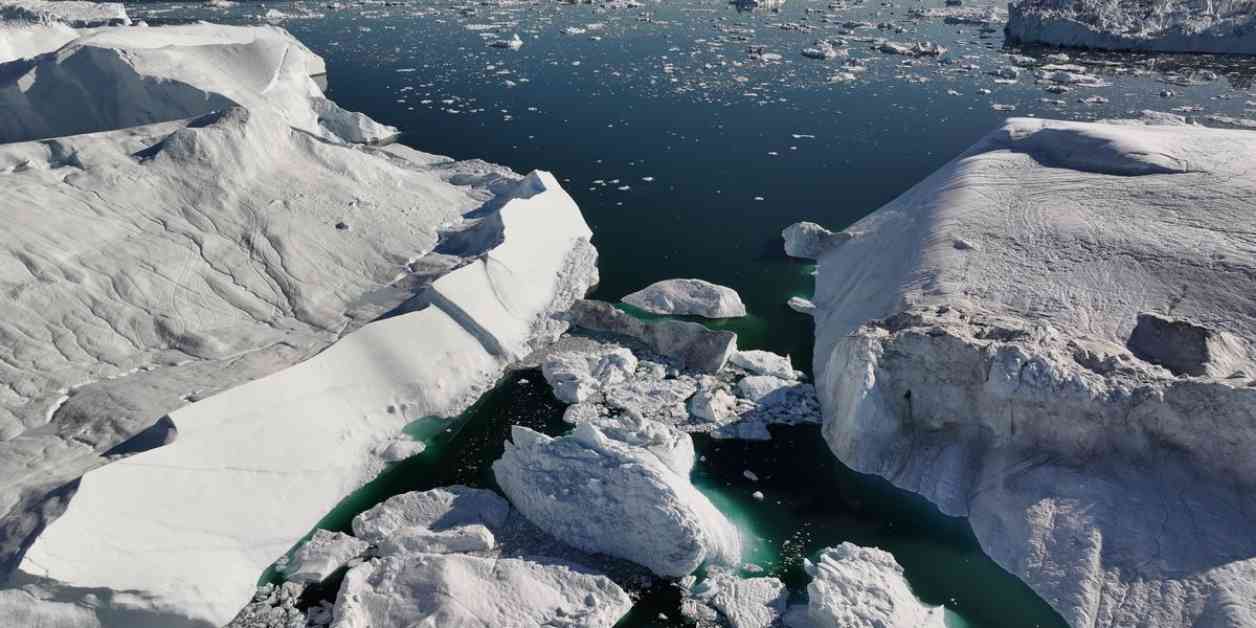The Earth Shook for 9 Days: Unprecedented Mega-Tsunami Triggered by Greenland Landslide
In September 2023, a remarkable event shook the Earth for nine consecutive days, leaving scientists baffled and highlighting the far-reaching impacts of climate change. The seismic signal originated from a massive landslide in Dickson Fjord, Greenland, which ultimately triggered a mega-tsunami unlike anything experts had seen before.
The initial confusion surrounding the event was due to the unusual nature of the seismic activity. Instead of a typical earthquake, the Earth experienced a continuous vibration, resembling a steady hum that reverberated across the globe. Researchers from University College London (UCL) were among the first to investigate the cause of this unprecedented phenomenon.
According to a study published in the journal Science, the landslide in Greenland was a direct result of the thinning glacier at the base of a towering 1.2km-high mountain peak. This destabilization led to a catastrophic rockslide, plunging into the waters of Dickson Fjord and generating a massive wave towering 200 meters high.
Dr. Hicks, a leading expert on the event, emphasized the interconnectedness of climate change, glacier instability, water movements, and seismic activity. The vibrations produced by the landslide were not only felt globally but also transmitted through the Earth’s crust, creating a sustained resonance that lasted for nine days.
Unraveling the Mystery: Water Sloshing and Earth’s Solid Crust
After extensive analysis and advanced modeling, scientists were able to pinpoint the source of the continuous hum that enveloped the planet. The vibrations emanated from Dickson Fjord, where the water was in constant motion, creating a unique seismic signature that reverberated for an unprecedented duration.
Dr. Kristian Svennevig, the lead author of the study from the Geological Survey of Denmark and Greenland, highlighted the significance of this event as the first recorded landslide and tsunami in eastern Greenland. He underscored the substantial impact of climate change on the region, emphasizing the urgent need for comprehensive measures to address glacier instability and its cascading effects.
The observation of water sloshing as vibrations through the Earth’s crust represents a groundbreaking discovery, shedding light on the complex interplay between environmental factors and geological processes. The lingering effects of the mega-tsunami serve as a stark reminder of the fragile balance within Earth’s ecosystems and the drastic consequences of unchecked climate change.
Implications for Climate Change and Global Resilience
The Greenland landslide and subsequent mega-tsunami serve as a sobering reminder of the urgent need to address climate change and its cascading impacts on vulnerable regions. The unprecedented duration and intensity of the seismic activity underscore the interconnectedness of environmental factors and the potential for catastrophic events in a rapidly changing world.
As Dr. Hicks aptly stated, this event highlights the intricate web of connections between climate change, glacier instability, water dynamics, and geological processes. The prolonged vibrations transmitted through the Earth’s crust serve as a poignant warning of the far-reaching consequences of environmental degradation and the pressing need for sustainable solutions to mitigate future disasters.
In conclusion, the Greenland landslide-triggered mega-tsunami represents a stark wake-up call for global action on climate change and the preservation of our planet’s fragile ecosystems. The reverberations of this unprecedented event will continue to resonate, serving as a poignant reminder of the urgent need for collective efforts to safeguard the Earth for future generations.













